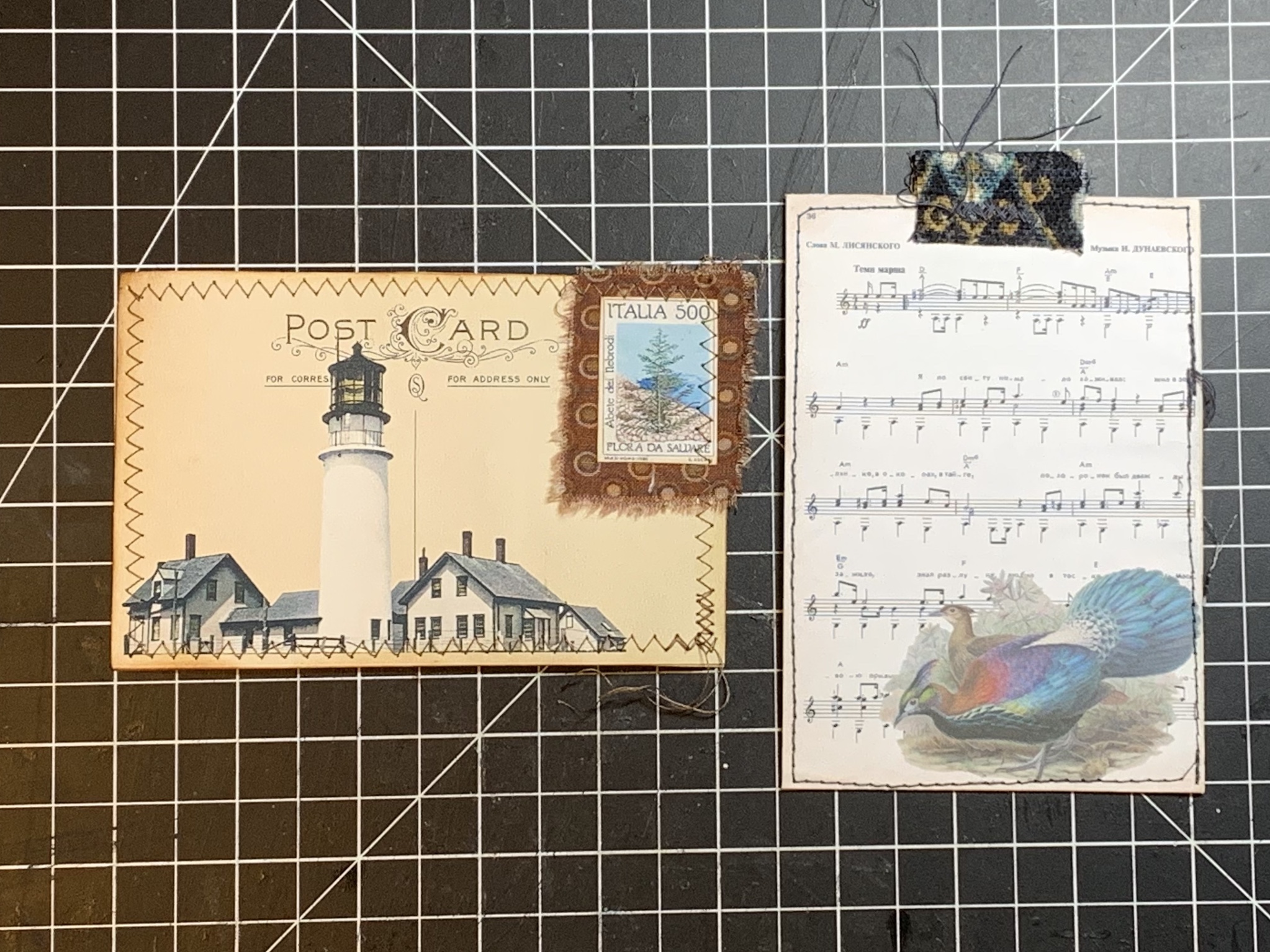Working with Digitals – Part 2
Well, hello there, friends! I’ve been having fun working on this series, and I really hope you are enjoying it.
I’m calling part 2 – “Fabric, Fibers and Texture”, since we’ll be talking about a variety of different textiles to use on your digitals. We’ll be going into detail about stitching, using fabric washi, lace, trim, ribbon and string on your printables. So let’s dive right in.
Below is the video for part 2, and under that are some before and after pictures that I hope show you how versatile digitals can be. And how easy it is to alter them!
Stitching
You may not think about stitching as a way to alter your digitals, but it is really something small that makes a huge impact.
Even just a stitch around the outside of a notecard will add interest to your piece. But, cooler still, you can use a variety of stitches to get different looks. Straight, zigzag and decorative stitches (if your sewing machine can do them!) can all be used on digitals.
Sometimes I tend to go back to the zigzag stitch again and again, but I think it’s good to remember that there are other options. Like a straight stitch, but in a crazy style. Or a zigzag stitch that goes off the side of the paper, creating a kind of serged look to the edge. Or even just changing the length or spacing of your zigzag are all ways to make your stitching look different.
You can also take scraps of fabric and stitch them onto your digitals to make tag toppers, or add them into collage.

What a little stitching can do! 
Samples of different types of stitching 
before stitching 
stitching digitals on digitals! 
Fabric stitched into collage or as tag toppers
Fabric washi (or any fabric!)
Using fabric is an amazing way to change up your digitals. You can use as little or as much as you want, and it adds both color and texture to your printed ephemera.
I like to use fabric washi on my pieces, since it already has the glue on it, but you can take torn or cut pieces of fabric and simply glue them down or stitch them on.
Just remember if you are using glue and then decide to stitch, be sure you don’t gum up your sewing machine needle by stitching through wet glue!
Below is a sample of how fabric washi tape can be used on a digital.

before using washi 
after washi with a label
Another great way to use fabric is to start with fabric and layer digitals on top. I love making raggedy notecards and tags, and as you can see, fussy cutting an image on a digital makes a great focal point for the tag!

Tag base and digital to use 
Completed tag!
Lace and Trim
I love finding intricate lace and trim to use on my digitals and in my journals. If it’s vintage – that’s all the better, but you certainly don’t have to have vintage lace to make a digital stand out.
Lace and trim can be used the same way as fabric scraps – as tag toppers or as decoration or included in collage. But lace can also be used for creating additional pockets or tuck spots on your pieces. And as a junk journaler, I know you get it – the more surprises the better!


decorative trim to make the picture pop 
adding lace can also create a pocket! 
before adding lace 
lace can add texture and color
Ribbon and string
Well, this section could get really long…because there is so much that can be done with ribbon and string! I probably won’t even scratch the surface, but I hope these ideas get your creative juices flowing.
Ribbon can be used as tag toppers, it can be sewn or glued on for decoration, and it can be a part of a 3D addition to a printable. I show you in the video how to create this cute bow through the printed tag. Didn’t it turn out great?
Sewn ribbon can also enhance a digital as well. I love how the white ribbon sewn onto the notecard below really brings out the white flower in the digital.
We’ll be talking more about string when we get into part 3 – where I review eyelets and brads and other metals, but using string to make a picture hanger type topper would be awesome. Or even sewing around the edge with a whip stitch or a blanket stitch would really make a notecard stand out.
Join me in a week for part 3 – where we’ll be talking about heavy metal! Ok, not heavy metal, just metal and other embellishments!
Digital kits used in the video and in this post:
Some of the links in this article are affiliate links. This means that if you make a purchase using them, I receive a small commission from the sale at no additional cost to you. This helps me to keep this blog going. Thanks for you support!




